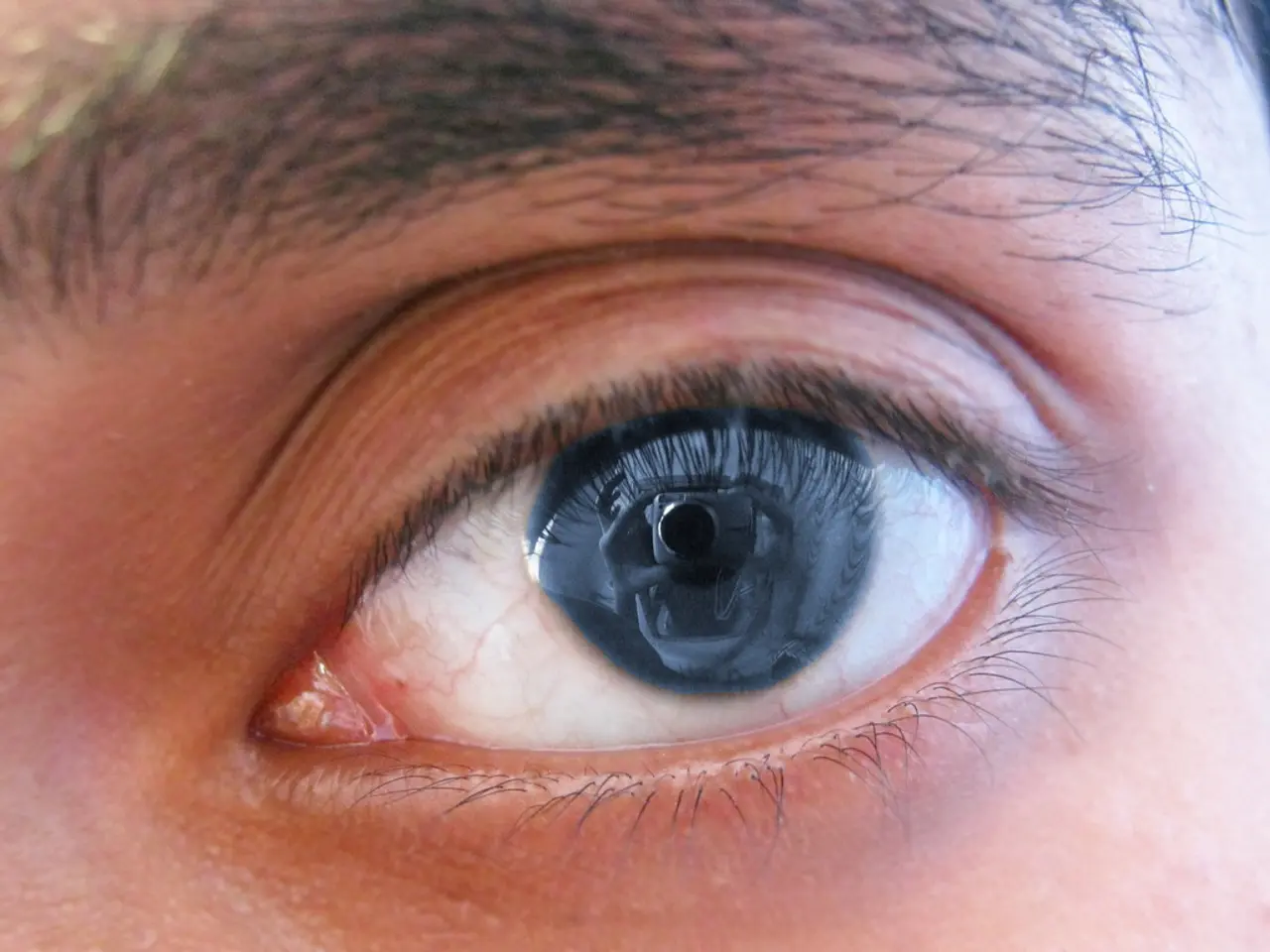Glaucoma with a Limited Perspective: Causes, Progression, and Remedies
In the realm of eye health, narrow-angle glaucoma is a serious condition that can potentially lead to vision loss if left untreated. This condition, which affects older individuals, women, and those with a family history of the disease, is characterised by the constant production of fluid in the eye that cannot drain away effectively due to blocked channels around the iris.
When it comes to treatment, the approach for both acute and chronic narrow-angle glaucoma varies.
For acute cases, the priority is urgent reduction of eye pressure and opening of the drainage angle. The most common initial treatment is laser peripheral iridotomy (LPI), a procedure that creates a tiny hole in the iris with a laser, allowing better fluid flow and relieving blockage. This treatment is often accompanied by medications such as eye drops (beta-blockers, prostaglandin analogues, carbonic anhydrase inhibitors) to rapidly lower intraocular pressure (IOP). In severe or refractory cases, surgical interventions like lens extraction (cataract surgery), trabeculectomy, or drainage implants may be necessary.
Chronic narrow-angle glaucoma, on the other hand, requires a focus on maintaining open angles and controlling IOP over time. Laser iridotomy remains a primary option to prevent angle closure, and medications to reduce IOP are commonly used daily to control the disease progression. If laser and medications are insufficient, minimally invasive glaucoma surgeries (MIGS) such as iStent, Hydrus Microstent, or goniotomy can be employed to improve aqueous outflow with fewer complications and faster recovery. More involved surgeries like trabeculectomy or tube shunt implants are reserved for difficult-to-control cases.
A summary of treatments for both acute and chronic narrow-angle glaucoma is provided below:
| Treatment Type | Acute Narrow-Angle Glaucoma | Chronic Narrow-Angle Glaucoma | |------------------------------|-----------------------------------------------|---------------------------------------------------| | Laser Peripheral Iridotomy| First-line to open angle and relieve pressure | Preventive and therapeutic to keep angle open | | Medications (eye drops) | To rapidly lower pressure | Ongoing control of IOP | | Lens Extraction | If angle remains narrow; to widen angle | As adjunct to surgery or to widen angle | | Minimally Invasive Surgery| Rarely initial, possibly if chronic persists | Common in chronic cases to improve drainage | | Trabeculectomy/Tube Implants| For uncontrolled or severe cases | For refractory glaucoma cases |
It is crucial to note that early diagnosis and timely treatment are key to preventing irreversible optic nerve damage and vision loss. People with a history of narrow-angle glaucoma should avoid dim light, certain medications, and eye drops that dilate the eyes to prevent an acute attack. In acute cases, emergency treatment involves the aforementioned medications.
Regular physical activity may have a link to less severe narrow-angle glaucoma, but individuals should consult their doctor before starting a new exercise routine to ensure it is safe. Narrow-angle glaucoma is more common among Inuit people and females, and its rates vary between ethnicities, with it being more common in people with East Asian heritage.
In conclusion, while narrow-angle glaucoma can have a serious impact on vision, it is a condition that is curable, provided treatment is sought early. Laser iridotomy, medications, minimally invasive surgeries, and traditional surgeries are all potential treatment options, each with its own benefits and risks. The best course of action depends on the individual case and the severity of the condition.
- Science has made significant strides in our understanding and treatment of narrow-angle glaucoma, a serious eye health issue known for potential vision loss.
- In workplaces striving for wellness, attention should not only be given to mental health, fitness, exercise, nutrition, and skin care, but also to medical conditions like chronic diseases such as glaucoma.
- The chronic disease of glaucoma, especially the narrow-angle type, can be managed over time through a focus on maintaining open angles and controlling intraocular pressure.
- Laser therapies, like iridotomy, and treatments, such as medications and minimally invasive surgeries, play critical roles in managing both acute and chronic narrow-angle glaucoma.
- The field of health and wellness extends beyond physical fitness to encompass eye health matters, such as proper management and treatment of eye conditions like glaucoma.
- Sports betting is a high-stakes activity often associated with leisure, but it is important to remember and monitor one's mental health and overall health while engaging in such activities.
- Skin care is essential for keeping our outer layers healthy, but regular check-ups and management of medical conditions like glaucoma are equally important to preserve long-term vision health.




